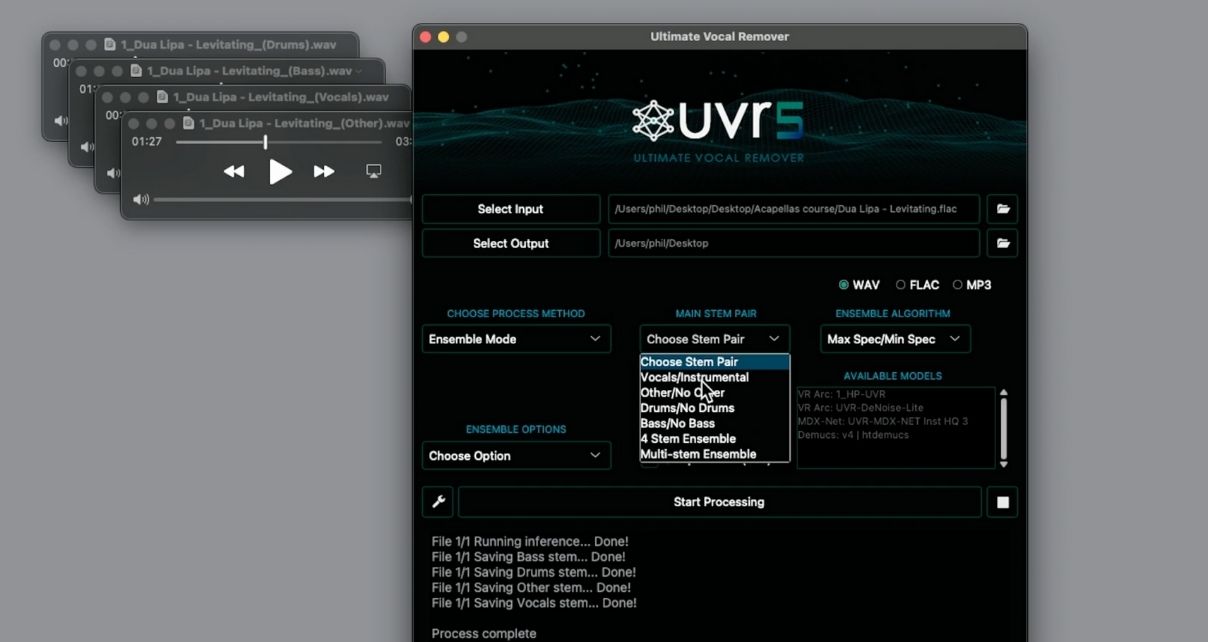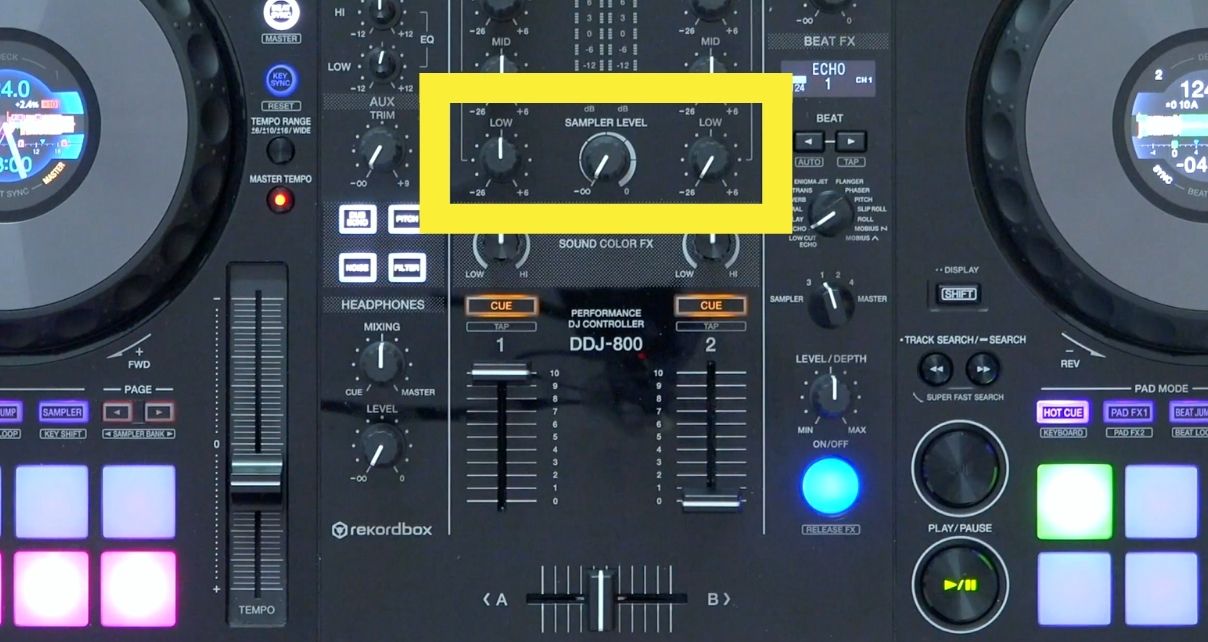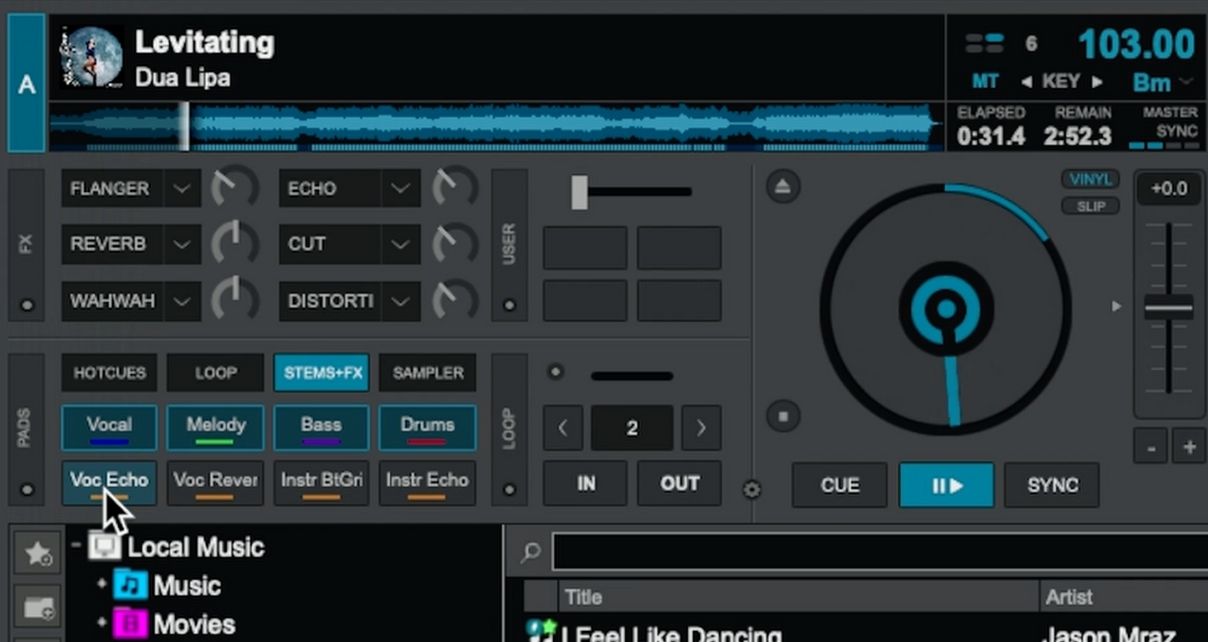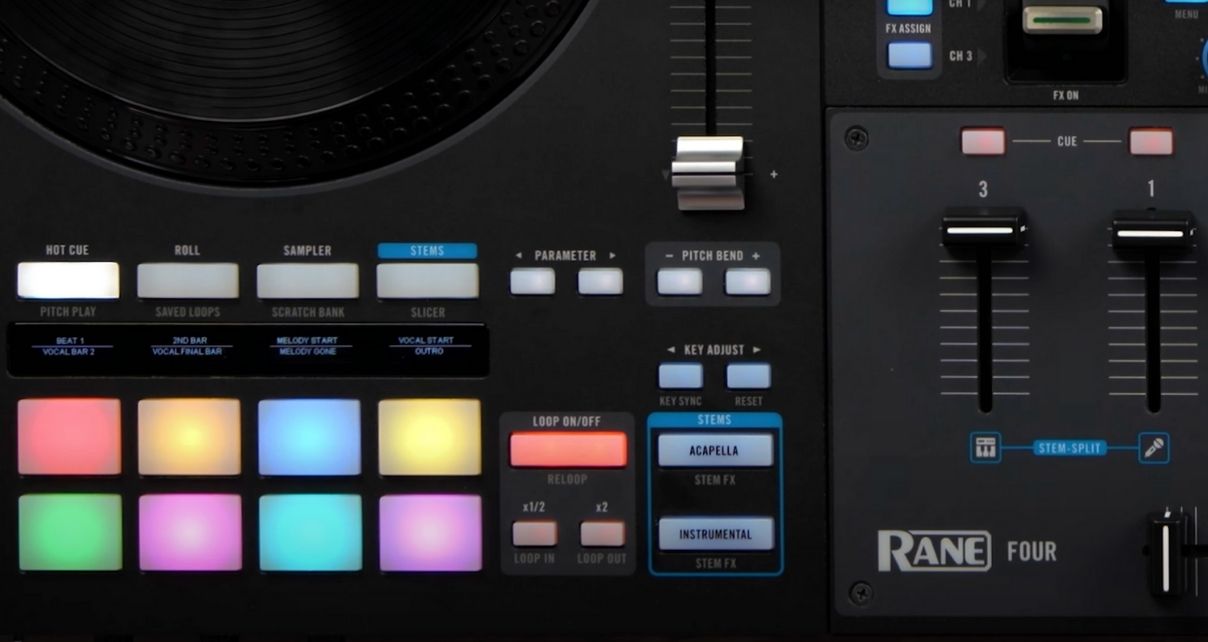Incorporating acapellas (vocal only versions of songs) in your DJ sets is a technique as old as the hills. Recently, DJ software has started to incorporate real-time “stems separation” features (stems separation being the ability to solo or mute the vocals and other parts of songs, such as drums, instruments and basslines).
The question is: Should you be using these new features? Are they the big thing many DJs seem to think they are? Are you falling behind by not doing so? Or are you best mastering planned, rehearsed routines using favourite acapellas? Maybe you should be using a combination of both of these techniques in your DJing?
In this article, we’ll give you some answers.
The new world of acapella DJing
Even if you said “no” to acapella DJing in the past and are saying “no” to all the new real-time stems functions in modern DJ software now, acapella DJing has definitely changed – for the better. You should take another look at it, at the very least.
In the past, you had to search for acapella vinyl to DJ with, then as file-sharing became a thing, hang around dodgy websites to find the same. It put many people off.

But nowadays, there is highly capable software available such as RipX and Ultimate Vocal Remover, which can let you create your own acapellas easily and end up with results that sound very close to those that might have leaked out of the studios in the past. And the result? You can basically get the acapella of anything you like – quickly, cheaply and easily.
Read this next: Where DJs Get Acapellas
Once you’ve got them, preparing and DJing with those acapellas is easier than ever, with beatgridding and key shift features making them far easier to DJ with – and get good sounding results from – than ever before.
Beyond acapellas
But nowadays, that very same software can also create “stems” for you, too. If you want the drums from a song, or an instrumental of a song, for instance, these are just as easy to obtain as the acapellas.
That means some of the techniques that DJs are using nowadays with stems (such as more creative transitioning, or making live “redrums” to spruce up the dynamics of older records) are also available to you with parts prepared “ahead of time”.
Learn to DJ with acapellas and stems the RIGHT way
Using acapellas and stems is one of the best ways to stand out and show off your skills as a DJ. Learn how it’s done properly with the upcoming Digital DJ Tips course, “Mixing With Acapellas & Stems” – Click here to find out more.
Preparing these song segments before your DJ sets lets you practise with them, organise them in your DJ software so you can easily find them when you want them, and be sure of their quality ahead of playing them in front of an audience. You can do clever stuff, but without the stress of coming up with it on the spot.
So if acapella DJing (and now, stems DJing too) is all able to be prepped ahead of time, why on earth would you want to risk using buttons on your DJ gear to isolate these parts or remove them from your tracks, in real time, for the first time, in front of a crowd?
The real-time stems advantage
Well, lots of reasons as it happens. Try it, and it won’t be long before you realise that this is a whole new way of DJing.
Whereas maybe in the past you’ve “swapped” basslines with EQs, now you can simply turn them on and off. How about being able to quickly switch off the melodic elements of a song in a beatmix, so it doesn’t key-clash with the song you’re mixing into, on the fly? Or adding effects only to the vocals, while the rest of the track plays on?

Truth is that if you play enough with the new features, it’s likely that at least one or two of these new techniques will “stick” and change the way you DJ. Not since the arrival of key shifting inside DJ software has a new feature been able to claim that for itself.
Sound good? Hold on there…
There is one elephant in the room, though: Audio quality. With “live” stems, audio quality is never as good as pre-prepared, and often far worse.
While it would be a mistake to just listen to the stems in isolation and on that hearing, reject them outright (because they always sound better “in the mix” than soloed), it is nonetheless a bugbear that no real-time stems algorithms are near to perfect… yet.

Also, just because a feature is there, doesn’t mean you should use it… new features present the risk of DJs using them “for the sake of it”. As with all features, it is best to understand why you’re using something before you do. (Remember when effects first arrived in DJ software, or samplers? Oh, the good old foghorn over every mix…).
Finally, worth pointing out that the real-time stem algorithms can put a big strain on your computer, causing audio glitches or worse. Definitely worth testing before important gigs.
So.. ahead of time, or on-the-fly?
Which brings us back to our opening question: Which should you do, and which is best? I’d say the best answer is: A bit of both!
Maybe consider practising using the real-time features (so you stay “in the flow” and have fun), then pre-preparing the “keepers” for your DJ sets ahead of time. Likewise, if you do try real-time stems in your sets and something works, why not take that idea, and turn it into a pre-prepared routine?
If you are performing “on the spot” with real-time features, consider checking the audio quality in your headphones first to be sure it won’t let you down, as results do vary quite a lot from track to track.

Or, how about a half-way house? Some DJ software, such as VirtualDJ and Serato, allows you to prepare the stems files ahead of time, letting you organise and practise, and then perform the routine live – no surprises, no computer strain, but more flexibility.
Of course, with some gear, you just don’t have the choice at all – If you use CDJs, Traktor gear, most Engine DJ gear, the only way to DJ with song parts like this is to prepare them ahead of time. But as we’ve seen, you can do that now in a way you just couldn’t a little while ago.
Get our brand new training: Mixing With Acapellas & Stems
I think one thing we can be sure of is that you really should be playing with these in some shape or form, though – little marks out your creativity more than a clever, original acapella transition, mashup or live remix.




